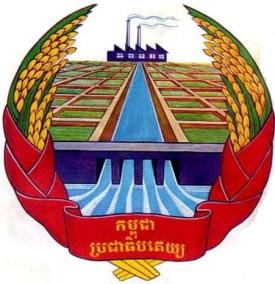
Krabi 2562 Film Difficulty Ranking: 4
Why Watch Krabi 2562?
- If you’re a fan of films built around a medley of scenes that segue between narrative and fiction
- To jump between past, ancient past, and present day Krabi
- For a subtle critique of the changing region
From: Thailand, Asia Watch: Trailer, IMDb Next: Mysterious Object at Noon, Mimosas, Android's Dream
A Political Opening
Krabi 2562 opens with a shot of a school assembly outdoors (see picture above). The students chant the national anthem, and salute the national religion (Buddhism) and the monarchy that rules ‘for the happiness of the people.’ It feels a bit dystopian, but this indoctrinated patriotism is pretty common throughout the world (even American school kids sing a bunch of patriotic songs in elementary school). After the singing stops, the camera cuts to an image of two plastic sheep. It’s a juxtaposition that symbolizes the blind patriotism of the kids and teachers.
I expected the film to contain more of a political message after the political jab in the opening. I also embarrassingly thought it would portray a dystopian future due to my ignorance that the date is in fact taken from the Buddhist calendar instead of the Gregorian one we’re familiar with; 2652 = 2019. Instead, Krabi 2562 is built around a series of clips of life in the region from interviews to deadpan narratives. There’s no main characters, not much of a continuous narrative, and it’s not a documentary either. In this sense, the style reminded me a bit of another Thai film, Apichatpong Weerasethakul’s Mysterious Object at Noon, and a bit of Andrea Bussman’s Fausto, two more films that weave together a mix of footage to create a feeling of story.
Time Traveling
Instead of following a particular character, the film hops between different scenes: some which seem real; and others that seem fictional. Seen together, they create a sense of the feeling of life in Krabi and how it’s changing. Some scenes, such as the interview with the boxer reminiscing on his past life, and the lady following in her parent’s footsteps, evoke a recent past. Other scenes, those that feature the ancient myths told by the Thai guide, and those that feature a pair of cavemen, evoke the ancient past. Whilst the contemporary present is represented by the tourists (foreign and domestic) visiting the region, and the advertising crew using the region’s natural beauty for an ad shoot. Whilst it doesn’t explicitly shout out that the region is taking a bad direction from past to present, it does show that local culture is being marginalized. The cavemen, boxer, and native crew member have been pushed aside (the native crew member literally disappears); the wildlife have turned into statues in a zoo inspected by people in Hazmat suits; and the myths and landscape have been converted into tourist draws. It’s as if the region is being ‘sanitized’ to cater to tourists and the outside world.
However, one thing that is lasting is the areas beautiful landscape. It still looks like the same place that the cavemen inhabited. It existed before stories. Despite the incursions of the outer world, the quiet soundtrack, populated mostly by the natural sounds of birds and cicadas, seems to hint that nature is also still in control. Whilst the people of Krabi can be pushed aside and marginalized, and the animals frozen in time, the beautiful landscapes’ immutability will continue to draw life to the region be it native or foreign.
What to Watch Next
If you want to watch more films built around a medley of scenes that segue between narrative and fiction, check out Andrea Bussman’s Fausto and Apichatpong Weerasethakul’s Mysterious Object at Noon.
Or if you want to watch another film whose narrative seamlessly jumps between the past and present, I strongly recommend watching Oliver Laxe’s Mimosas. (On a side note, Oliver Laxe actually makes a cameo in Krabi 2562 as the ad commercial director). You could also watch The Last of Us, another intriguing film which follows an African migrant that gets stuck with a modern day caveman in the wild, preventing him from reaching his European dream.
Finally, if you wanted to watch a slow, experimental sci-fi set in a touristic region (as I thought this film was going to be), check out Ion de Sosa’s Androids Dream, set in the Spanish beach resort town of Benindorm in the off-season.





 The Khmer Rouge created a new country by creating a new mythology. Art and tradition was thrown to the side. Now “the spade is your pen, and the rice field is your paper”. The picture on the right shows the Khmer Rouge’s utopia. There is a factory, irrigation, corn harvest, and rice fields but no people. This is Pol Pot’s vision for a state driven by work and void of culture.
The Khmer Rouge created a new country by creating a new mythology. Art and tradition was thrown to the side. Now “the spade is your pen, and the rice field is your paper”. The picture on the right shows the Khmer Rouge’s utopia. There is a factory, irrigation, corn harvest, and rice fields but no people. This is Pol Pot’s vision for a state driven by work and void of culture.
You must be logged in to post a comment.